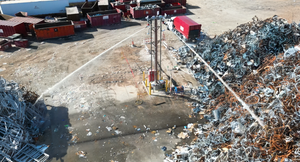This Week in Waste: Top Stories September 26 - 30
It won't be easy, but there is hope to refine our impact on the planet as humans by refining our thoughts on and systems. This week's top stories are a reflection of all of the different ways people are reimagining the waste and recycling industries to create more effective change.

1. How Much Can We Recycle?
Chaz Miller
A study on the recycling rate of cardboard boxes, or "old corrugated containers" as they are called, suggested the possibility of a 91.4 percent rate. Whether this is possible or not depends on the accuracy of the data being used to produce these percentages. In this commentary piece, Miller urges readers to consider the idea that there is a maximum level of recyclability and that in order to achieve it, if we have not already, we must be more cognizant of the different details that go into calculating our current rates.
2. Why Dow is Getting Behind Hybrid Mechanical and Chemical Recycling Plants
Arlene Karidis
There are two main types of plastic recycling; mechanical and chemical. Each process has its own pros, cons, and place in the industry. The chemical company Dow has leaned into both processes by pursuing a facility that houses both styles of plastic recycling under the same roof.
3. Episode 166: Government’s Role in Funding Recycling Infrastructure
Liz Bothwell
In this episode of the NothingWasted! podcast, we explore the different incentive programs used in California to encourage recycling on a corporate level. Incentives take the form of grants and tax exclusions. These different programs and monetary incentives have made recycling more appealing to do.
4. How are Petrochemical Companies Doing in Shifting From Virgin Plastic?
Arlene Karidis
Virgin plastic is a waste byproduct of the oil and gas production that has been growing in light of the shale gas boom. This production of new plastics is counteracting the work being done by many governments and organizations to create a circular economy and reuse the already available plastics. Due to this, legislators have been forced to hammer down on the creation of the material.
5. What Brands are Shifting from Tree Feedstocks and How
Arlene Karidis
Between 1990 and 2020, global forest areas decreased by 178 million hectares. Canopy is a non-profit working to put a halt to this. In this Q&A, writer Karidis meets with the founder and executive director of Canopy, Nicole Rycroft, to hear just how this organization is working to slow down deforestation and all of the negative environmental impacts that occur in reaction.
About the Author
You May Also Like


.png?width=300&auto=webp&quality=80&disable=upscale)